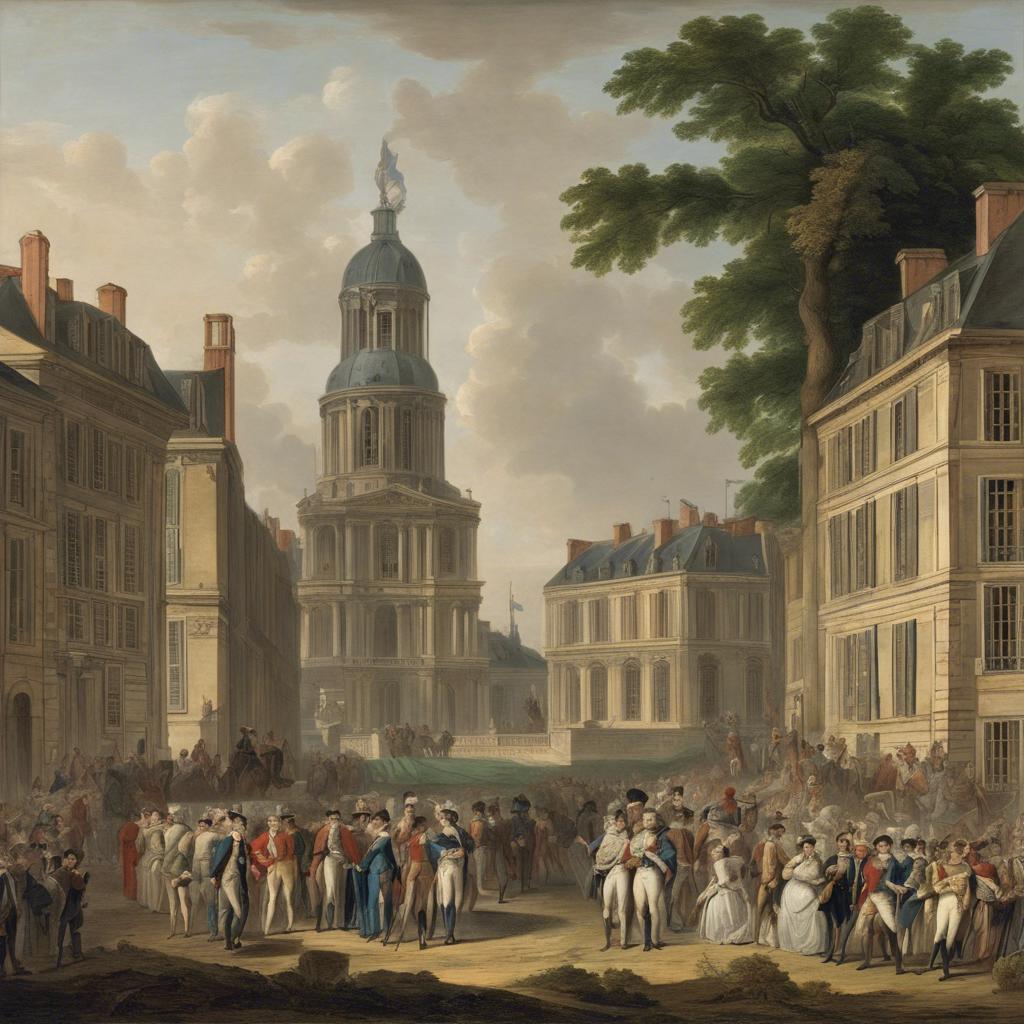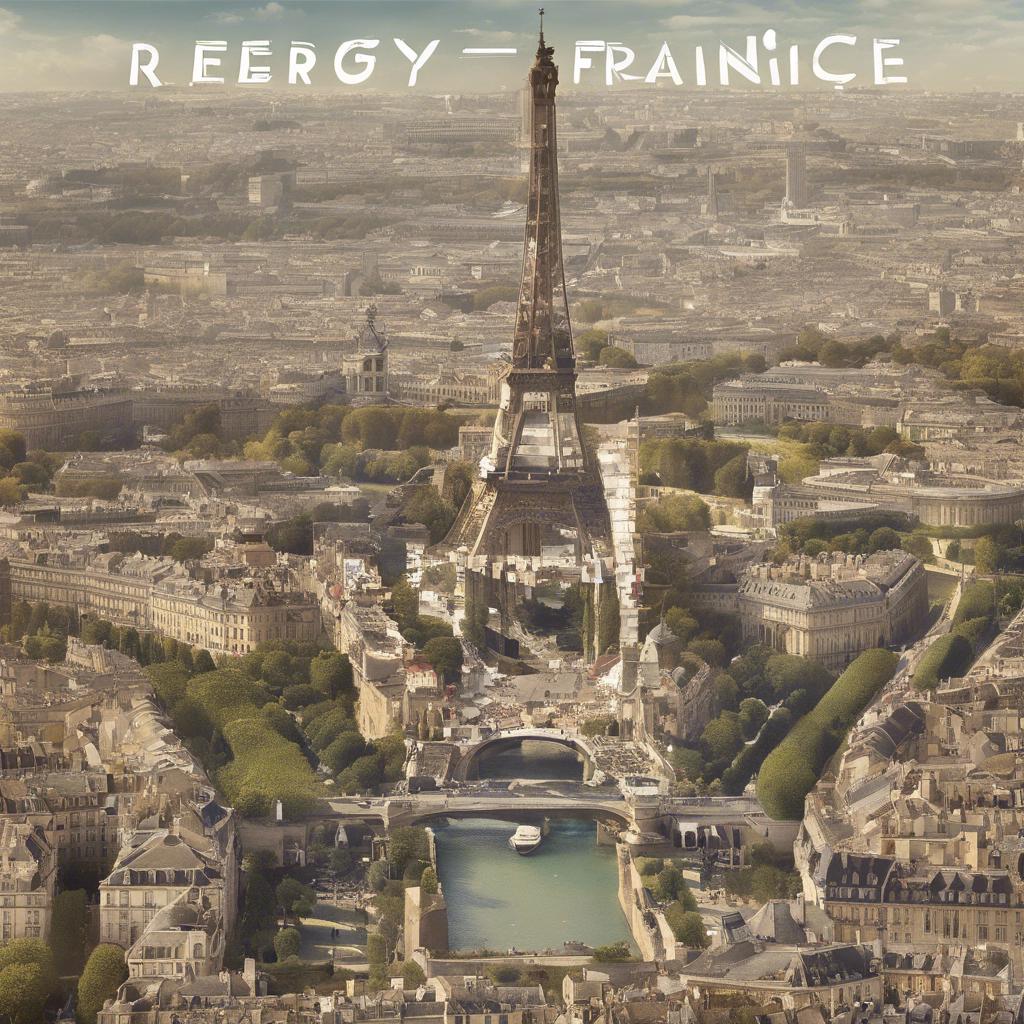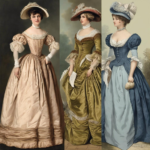During the late 18th and early 19th centuries, France underwent a period of significant political and social change known as the Regency Era. Following the turbulent reign of Louis XVI, France was thrust into a period of transition, marked by revolution, empire, and restoration. This article will delve into the complexities of Regency Era France, exploring the key events, figures, and cultural developments that defined this pivotal moment in French history.
Step Into the World of Cheryl Bolen
Dive into the enchanting stories of love, intrigue, and elegance set in the Regency Era. Cheryl Bolen's novels offer timeless romance and captivating tales that will leave you wanting more.
Explore Cheryl Bolen's Books Now
Political Landscape of Regency Era France
The was marked by turmoil and transition following the French Revolution. During this time, France was governed by a regent appointed to rule in the absence of the monarch. The regency period began in 1814 with the abdication of Napoleon Bonaparte and lasted until the Bourbon Restoration in 1815.
One of the key political figures during this period was Charles Maurice de Talleyrand, a skilled diplomat who played a significant role in shaping France’s foreign policy. Talleyrand served as Prime Minister and Foreign Minister under both Napoleon and the restored Bourbon monarchy. His diplomatic efforts helped to negotiate treaties and secure alliances that would shape France’s position on the international stage.
Despite the political instability of the regency era, France experienced a period of relative peace and prosperity. The economy began to recover from the ravages of war, and cultural and intellectual life flourished. The social elite of France during this time were known for their lavish lifestyles and sophisticated tastes, contributing to the vibrant cultural scene of the era.
– Analysis of the power struggles and political developments during the transitional period in France
During the regency era in France, following the death of Louis XIV in 1715, power struggles and political developments shaped the transitional period in the country. One key aspect of this period was the establishment of a regency council to govern on behalf of the young King Louis XV. This council was led by Philippe II, Duke of Orléans, who served as the regent from 1715 to 1723. The regent faced challenges from various factions within the French court, all vying for influence and power during this tumultuous time.
Key points of the power struggles and political developments during the regency era in France include:
- The rivalry between the Duke of Orléans and members of the nobility, who sought to assert their own influence over the regent and the young king.
- The emergence of political factions such as the pro-English Hanoverians and the pro-Spanish Bourbon supporters, each seeking to sway French foreign policy in their favor.
- The financial instability of the French state, exacerbated by the costly wars of Louis XIV, which led to economic hardships and further fueled political tensions within the country.
In the midst of these power struggles and political developments, the regency era in France saw significant reforms and cultural shifts. Some notable changes included the establishment of financial reforms to address the country’s economic woes, as well as the cultural flourishing of the Enlightenment movement, which had a lasting impact on French society. Despite the challenges faced during this transitional period, the regency era in France laid the groundwork for the political and social changes that would shape the country in the years to come.
Cultural Influences on Fashion in Regency Era France
During the Regency Era in France, fashion was greatly influenced by various cultural factors that shaped the clothing choices of the time. One of the key influences on fashion during this period was the French Revolution, which led to a shift towards simpler and more practical styles. The Revolution also brought about a rejection of the opulent and extravagant fashions of the aristocracy, leading to a more democratic approach to dress.
Another cultural influence on fashion in Regency Era France was the rise of Romanticism, which emphasized individualism, emotion, and nature. This cultural movement influenced the silhouettes and fabrics used in clothing, with a focus on soft, flowing lines and delicate details. Romanticism also led to a revival of interest in historical costume, inspiring designers to create pieces inspired by past eras.
Additionally, the cultural ideals of the time, such as the emphasis on beauty, grace, and refinement, also played a significant role in shaping fashion trends in Regency Era France. Women’s fashion, in particular, was characterized by high-waisted dresses, empire silhouettes, and delicate accessories such as ribbons and lace. Men’s fashion, on the other hand, featured tailored suits, cravats, and top hats, reflecting a sense of elegance and sophistication.
– Exploring the impact of literature, art, and societal norms on the extravagant fashion trends of the time
In the extravagant world of Regency era France, fashion was not just about clothing, but a reflection of literary and artistic influences, as well as societal norms. Literature played a significant role in shaping the fashion trends of the time, with novels and poems often inspiring the rich fabrics, intricate designs, and bold colors that were popular among the upper class. Art, too, played a crucial role, with paintings and sculptures serving as sources of inspiration for elaborate hairstyles, accessories, and even the silhouette of a dress.
Societal norms also played a major part in influencing fashion trends during this period. The strict hierarchy of French society meant that certain styles were reserved for the elite, while others were deemed appropriate for different social classes. This led to a complex tapestry of fashion choices, where individuals used clothing and accessories to signal their wealth, status, and even political affiliations. From the extravagant gowns of the nobility to the more subdued ensembles of the middle class, fashion in Regency era France was a powerful tool for self-expression and social commentary.
the impact of literature, art, and societal norms on fashion trends during the Regency era in France cannot be overstated. These influences combined to create a visual language that spoke volumes about an individual’s identity, aspirations, and place in society. Through a careful study of the clothing, accessories, and hairstyles of the time, we can gain valuable insights into the cultural, political, and artistic landscape of this fascinating period in history.
Revolutionary Ideas and Social Unrest in Regency Era France
The Regency Era in France was a time of revolutionary ideas and social unrest that ultimately led to significant changes in the country’s political landscape. The period between 1715 and 1830 was marked by the rise of Enlightenment philosophy and the spread of revolutionary ideals that challenged the traditional monarchy.
During this time, key figures such as Napoleon Bonaparte and Maximilien Robespierre emerged as leaders in the fight for political and social change. The French Revolution of 1789 played a crucial role in shaping the events of the Regency Era, as it paved the way for the establishment of a constitutional monarchy and the eventual overthrow of the Bourbon dynasty.
As ideas of democracy and equality spread throughout France, tensions between the lower and upper classes escalated, leading to widespread social unrest and uprisings. The establishment of the Napoleonic Empire in 1804 brought a brief period of stability, but the desire for liberty and equality continued to fuel resistance movements and rebellions well into the early 19th century.
– Understanding the underlying causes of discontent and the revolutionary movements that shaped French society during this period
During the Regency era in France, discontent among the population was fueled by a combination of economic hardships, social inequality, and political instability. The lavish lifestyle of the aristocracy contrasted sharply with the poverty and suffering of the lower classes, leading to widespread dissatisfaction. Additionally, the autocratic rule of King Louis XIV and his successors created a sense of oppression and lack of representation among the people.
Revolutionary movements began to take shape as various groups within French society sought to challenge the existing power structures and advocate for social change. The Enlightenment ideals of liberty, equality, and fraternity inspired many to question the status quo and demand greater rights and freedoms. Intellectuals and philosophers such as Voltaire, Rousseau, and Montesquieu played a crucial role in shaping the revolutionary discourse and challenging traditional notions of authority.
The French Revolution of 1789 was the culmination of years of discontent and simmering tensions within French society. The storming of the Bastille and the subsequent events that unfolded marked a turning point in the history of France, leading to the overthrow of the monarchy and the establishment of a republic. The revolutionary fervor that swept through the country during this period forever changed the social, political, and cultural landscape of France.
Recommended Reading List for Further Understanding Regency Era France
In order to gain a deeper understanding of the Regency Era in France, it is essential to explore a variety of historical texts and novels that delve into this fascinating period. Below is a curated list of recommended reading that will provide valuable insights into the social, political, and cultural landscape of France during this time:
- “Madame de Pompadour” by Nancy Mitford: This biography offers a detailed look at the life of the influential mistress of King Louis XV, shedding light on the court intrigues and power dynamics of the era.
- “The Regency Years: During Which Jane Austen Writes, Napoleon Fights, Byron Makes Love, and Britain Becomes Modern” by Robert Morrison: This engaging non-fiction book explores the Regency period in both France and Britain, highlighting the key events and personalities that shaped the era.
- “The Shadow Queen” by Sandra Gulland: This historical fiction novel offers a captivating account of the life of Josephine Bonaparte, the first wife of Napoleon Bonaparte, providing a unique perspective on the Regency Era from a female point of view.
– A curated list of historical texts and academic works to deepen your knowledge of this fascinating period in French history
- The Memoirs of Madame de Stael – Dive into the personal reflections of one of the most influential figures of the Regency era. Madame de Stael’s memoirs offer a unique perspective on the political and cultural landscape of France during this period.
- The Social History of France in the 18th Century – This academic work provides a comprehensive overview of the social structures and norms that defined French society during the Regency era. Gain insight into the daily lives of different social classes and the dynamics that shaped their interactions.
- The Regency Politics: Power and Patronage in France, 1715-1723 – Explore the intricate political maneuverings of the Regency period with this in-depth analysis of power dynamics and patronage networks. Understand how political decisions were made and how they impacted the course of French history.
The Conclusion
the Regency Era in France was a period of significant political, social, and cultural change. From the turbulent aftermath of the French Revolution to the rise of Napoleon Bonaparte, this era shaped the course of French history in profound ways. By examining the events and key figures of this time, we can gain a deeper understanding of the complexities and dynamics at play in Regency France. As we continue to explore and study this fascinating period, may we glean valuable insights into the past that can inform our present and future.


